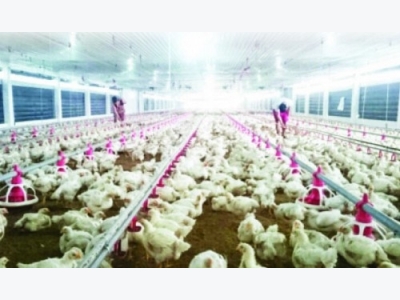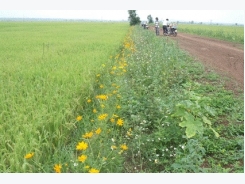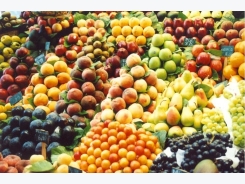Vietnam sees growing potential for chicken export

Chickens are bred at a farm in the southern Vietnamese province of Dong Nai.
Following several years of hardship, Vietnamese chicken is set to be exported to Japan in a couple of days and is expected to enter the European market in the near future.
The first batch of Vietnamese chicken is scheduled to penetrate the Japanese market next week.
The information was announced at the conference on the export of Vietnamese poultry products organized by the Ministry of Agriculture and Rural Development, in coordination with the Southeast Livestock Association, in Ho Chi Minh City on Saturday.
Following approval from Japanese authorities, Koyu & Unitek Company, based in the southern Vietnamese province of Dong Nai, is carrying out the last phase of preparation for the first shipment.
According to Khuu Nhon Hieu, director of the company, he has spent three years negotiating before finally signing an agreement with his Japanese partners.
The entire process of raising the chickens and disease control has to strictly follow all requirements from Japan.
“The first shipment is part of a trial. We will start exporting the poultry in larger volumes in August,” Hieu elaborated.
If that proves a success, the firm will expand its production and cooperate with local farms to meet the high demand from the Japanese market.
Koyu & Unitek is the first Vietnamese firm to have its chicken products exported to Japan.
Several local companies have also registered to participate in the export program, according to the agriculture ministry.
Speaking at the conference, Gabor Fluit, general director of De Heus Asia, which specializes in animal nutrition, stated that Japan imports nearly one million metric tons of poultry a year, with Brazil being the largest exporter with 420,000 metric tons in 2016.
During the first phase, Koyu & Unitek is expected to supply 300 metric tons of chicken per month, leaving many opportunities for other Vietnamese businesses to join the market, Fluit said.
New opportunities
Japan is not the only potential importer of chicken, Fluit said, listing Europe and the United Arab Emirates as other importers.
Several European businesses have contacted De Hues, stating their intention to import chicken from Vietnam, the general director continued, adding that the Southeast Asian country is able to meet that demand as many Vietnamese farms have joined a safe food chain.
Backing the opinion, Kay Vreese, general director of Bel Ga JSC, a chicken producer based in the Central Highlands province of Lam Dong, said that Vietnam can export its chicken to other nations aside from Japan.
Close cooperation between the Southeast Asian country and foreign partners is needed to ensure the quality and price of the product, Vreese added.
Nguyen Van Ngoc, owner of a chicken farm in Dong Nai, which is partaking in the safe food chain of the export program, stated he had been making many changes to his facility to live up to international standards, despite being in the business for nearly two decades.
Apart from requirements regarding their farms, chicken feed, and disease control, farmers need to also pay attention to animal welfare, Ngoc noted.
“The program provides us with an opportunity to compete with imported poultry, as well as to have a stable market for our products,” the farmer said.
Related news
Tools

Phối trộn thức ăn chăn nuôi

Pha dung dịch thủy canh

Định mức cho tôm ăn

Phối trộn phân bón NPK

Xác định tỷ lệ tôm sống

Chuyển đổi đơn vị phân bón

Xác định công suất sục khí

Chuyển đổi đơn vị tôm

Tính diện tích nhà kính

Tính thể tích ao



 Deputy PM Hue commends agricultural cooperatives in Lam…
Deputy PM Hue commends agricultural cooperatives in Lam…  2030 rice exports targeted at 4 million tons
2030 rice exports targeted at 4 million tons